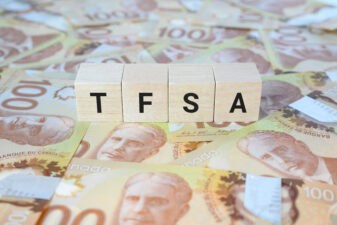Dream Office Real Estate Investment Trst (TSX:D.UN) has been a favourite stock of mine for some time, because it fit nicely into the “if there is greed, be fearful, and if there is fear, be greedy” philosophy of investing. Specifically, investors were concerned about Dream Office’s Albertan real estate, so they pushed the value of the stock down far beyond the value of the entire portfolio.
Back in February, I’d suggested that there was an 11% discount to the net asset value (NAV) of the stock, and it was trading at a discount before taking into consideration the entire Albertan portfolio, which had been written off.
When you can find a company that has an underlying asset that is worth more than the company’s shares, you have a great opportunity, because one of two things will happen: either the market will begin to value the assets, thus increasing the price of the shares, or the company can sell the assets and then use the cash to purchase shares.
Dream Office has done both. It became clear in the spring that the company was going to be entering a state of optimization. The chairman of Dream Office said, “we basically see Dream Office REIT as under construction and we’re hoping to be finished by the end of 2018.” The CEO echoed that sentiment, cautioning that the operating business could suffer while they finished their plans.
Although the business still has more work to be done, the market clearly likes where things are headed. Although we’re due for an earnings report soon, when the company released its Q3 report, the NAV as of September 2017 was $22.40. That means that the value of the underlying assets, if broken down into shares of stock, would be worth $22.40. And with the stock currently trading right around $22.80, it’s clear that the market has been paying attention.
But now that we’ve reached parity with the NAV, investors have to determine whether they should start selling Dream Office or if there is more room for growth. Personally, I see Dream Office as a continued hold for two primary reasons.
The first reason is based on the company’s strategy. In Q4 2013, the company had 186 properties in 15 different markets. This was untenable, and we saw what happened as oil prices cratered. The company has since made significant strides and has reduced properties to 46 in eight markets. Although Dream Office has reduced the amount of owned squared footage, it has increased its average net rent per square foot by nearly $3.
Ultimately, it wants its target core portfolio to be 30 properties with a little over 70% in the Greater Toronto Area. I see this as a net positive because Toronto is experiencing tremendous growth while also having the lowest vacancy rate in all of North America.
Suffice it to say, the strategy is solid.
The second reason I like this company is because the yield is lucrative. Dream Office has been forced to cut the dividend twice over the past couple of years, but I struggle to see a reason for future cuts to come. With the company nearing its target core portfolio, I imagine Dream Office is in a solid position. So, you can benefit from the 4.38% yield paid out on a monthly basis.
All in all, I like what Dream Office offers and therefore recommend investors continue to hold for the income and potential future growth.









